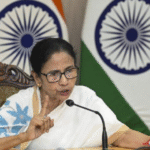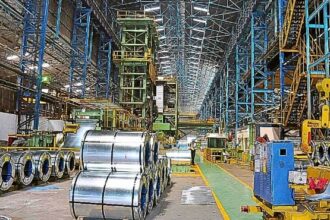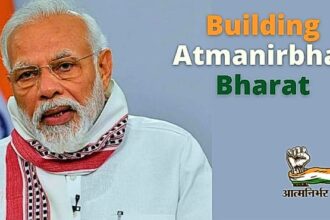This Diwali has been a milestone that not only lighted up life but also the economy of India. The country is said to have posted such massive festive sales of goods amounting to Rs 5.40 lakh crore and Rs 65,000 crore in services which is a resounding 25 percent rise over the previous year.
According to the Confederation of All India Traders (CAIT), it is India’s largest festive trade ever. What started as a Diwali celebration turned into a double celebration of economy and culture for India reaching a new high of Rs. 5.40 lakh crore of sales of goods and Rs. 65,000 crore of services; this has been possible largely due to the lower GST rates and the growing love for local products.
Festive boom across India
The festival days of Navratri and Diwali saw the all-India markets full of life. Sweet shops, gold shops, department stores, fancy shops, and whatnot – the buyers were there in full force, loading carts, baskets, and bags with the latest purchases. CAIT’s survey covered 60 distribution centres across Tier 1, Tier 2, and Tier 3 cities and demonstrated how big sales have been equally contributed by metropolitan cities as well as the rural areas.
One major factor that contributed to the phenomenal rise in demand was the government promotion of the “Vocal for Local” and “Aatmanirbhar Bharat” campaigns. In an opinion poll, more than 87 percent of respondents stated that they preferred Indian products to the foreign ones. The transition not only revitalized local industries but also made the demand for Chinese products decrease quite significantly.
Strong show by Indian manufacturers
Compared to 2024, Indian manufacturers had a bright year in which their sales were more than 25% higher. Several fields such as gold and jewellery, grocery and FMCG, electronics, and consumer durables gained vast numbers of customers. CAIT reported that traditional brick-and-mortar stores were still the main channel and accounted for almost 85% of the total festive sales.
Gold markets were more than usually glittering; they set a new record registration of the demand for Dhanteras. The All India Gem and Jewellery Domestic Council proclaimed the sales valued at about Rs 85,000 crore over just two days. By the addition of Bhai Dooj and Dhanteras, the overall jewellery sales will most probably be as high as Rs 1.35 lakh crore.
Services add a big boost
The joy of the festival did not stop with the goods. The service industry, which takes care of packaging, logistics, hospitality, delivery networks, travel, and event management, contributed another Rs 65,000 crore to the total trade volume. Besides, this industry has also generated nearly 50 lakh temporary jobs, which is a great initiative for small businesses and the gig economy during the festive period.
The rural and semi-urban areas were the major contributors to the festive trade, accounting for nearly 28 percent of the total volume this year. This shows that there is a higher purchasing capacity together with deeper market penetration outside the metro areas.
Economic indicators reflect confidence
Indeed, the festive feast helped to improve market mood across the board. The improvement of the Trader Confidence Index (TCI) from 7.8 in 2024 to 8.6 is accompanied by a similar increase in the Consumer Confidence Index (CCI), which has also risen to 8.4. Experts attribute the change to factors like steady prices, low inflation, and rationalised GST rates, all of which have eased spending for middle-class households.
Prime Minister Narendra Modi’s appeal to consumers to buy Indian products gave shoppers a lot of energy, CAIT’s report suggests. Several traders even called him the ‘brand ambassador’ for GST relief and Swadeshi products because of this.
The 2025 festive season has been a real record-breaker for the Indian retail economy. This Diwali became a festival of both prosperity and patriotism with Rs 5.4 lakh crore worth of goods, Rs 65,000 crore of services, and millions of happy consumers. The most important thing is that it demonstrated how local traders and small manufacturers – the backbone of India’s economy – are leading the new wave of growth that aligns with the Aatmanirbhar Bharat vision.
India’s retail story is getting better and better as the year is coming to an end. It proves that the festival of lights turns into a festival of growth for the entire nation when tradition meets economic opportunity.









